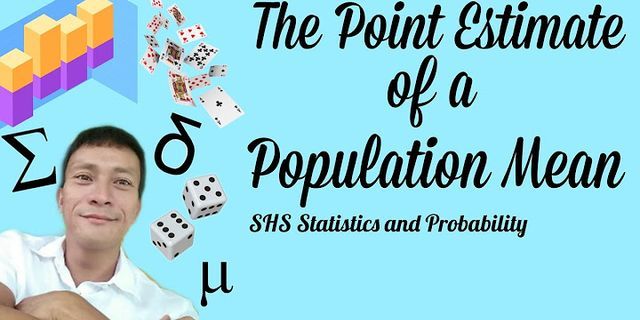Software Project Management- ________ is a unit of measurement to express the amount of business functionality an information system (as a product) provides to a user.
a) Function point
b) Lines of Code
c) Use case points
d) Story points
Answer: a) - ________ measures the size of a computer program by counting the number of
lines in the text of the program’s source code.
a) Function point
b) Lines of Code
c) Use case points
d) Story points
Answer: b) - Which one of the following statements is not true about the function point metric?
a) It is specification-based.
b) It is language dependent.
c) It is user-oriented.
d) It is used for data processing systems
Answer: b) - One of most important
factors to consider in make-or-buy decision is ________.
a) Availability
b) Maintainability
c) Serviceability
d) Reliability
Answer: a) - ________ estimates the cost, effort, and schedule when planning a new software development activity.
a) Function point
b) Lines of Code
c) Use case points
d) COCOMO II
Answer: d) - A software project is said to be ________ type, if the
highest level of complexity, creativity, and experience are required.
a) Organic
b) Embedded
c) Semi-detached
d) Firmware
Answer: b) - In COCOMO II model, size of software is stated in terms of ________.
a) object points
b) function points
c) lines of code
d) all of the above
Answer: d) - COCOMO I is suitable for non-sequential, rapid development and reuse models of
software.
a) True
b) False
Answer: b) - The basic principles of software project scheduling includes ________.
a) Compartmentalization and Interdependency
b) Time allocation
c) Defined responsibilities, outcomes and milestones
d) All of the above
Answer: d) - The task network is used to compute ________.
a) the critical path
b) a timeline chart
c) a variety of
project information
d) all of the above
Answer: d) - Both PERT & CPM allows software planner to ________.
a) Determine critical path
b) Establish most likely time schedules for individual tasks
c) Calculate boundary times
d) All of the above
Answer: d) - Which of the following statements is true about the Gantt chart?
a) It can be developed for the entire project.
b) It
separate charts can be developed for each project function.
c) It enables you to determine what works will be conducted at a given point in time
d) All of the above
Answer: d) - ________ is the approved cost baseline for the work package in the earned value analysis.
a) Planned Value
b) Earned Value
c) Actual Cost
d) Present value
Answer: a) - ________ is the budgeted value of
the completed work packages in the earned value analysis.
a) Planned Value
b) Earned Value
c) Actual Cost
d) Present value
Answer: b) - ________ is incurred during the execution of work packages up to a specified point in time.
a) Planned Value
b) Earned Value
c) Actual Cost
d) Present value
Answer: c) - Earned Value Analysis is used to ________.
a) Monitor and
Control Project Work
b) Control Schedule and Control Costs
c) Control Procurements
d) All of the above
Answer: d) - The indicators of Variance Analysis in Earned value management consists of ________.
a) Cost Variance
b) Schedule Variance
c) Variance at Completion
d) All of the above
Answer: d) - ________ indicates the difference between the earned value and the actual
cost.
a) Cost Variance
b) Schedule Variance
c) Variance at Completion
d) Price variation
Answer: a)
In this section of Software Engineering – Software Project Management.It contain Software Process and Project Metrics MCQs (Multiple Choice Questions Answers).All the MCQs (Multiple Choice Question Answers) requires in depth reading of Software Engineering Subject as the hardness level of MCQs have been kept to advance level.These Sets of Questions are very helpful in Preparing for various Competitive
Exams and University level Exams.
Practice it now to sharpen your Concepts
1 . The terms measure, measurement, and metric all share the same definition according to the IEEE Standard Glossary of Software Engineering Terms.
2 . Which of these are valid reasons for
measuring software processes, products, and resources?- to characterize them
- to evaluate them
- to price them
- to improve them
- a, b, d
3 . Process indicators enable a software project manager to- assess the status of an on-going project
- track potential risks
- adjust work flow or tasks
- none of the above
4 . Public metrics are used- to evaluate the performance of software development teams.
- to appraise
the performance of individual team members.
- to make strategic changes to the software process.
- to make tactical changes during a software project.
- c and d
5 . Which of the following items are not measured by software project metrics?- inputs
- markets
- outputs
- results
6 . Software quality and functionality must be measured indirectly.
7 . Which of following are advantages of using LOC (lines of code) as a size-oriented metric?- LOC is easily computed.
- LOC is a language dependent measure.
- LOC is a language independent measure.
- LOC can be computed before a design is completed.
8 . Which of the following are advantages of using function points (FP) as a measure of the functionality delivered by a software
application?- FP is easily computed
- FP is a language dependent measure.
- FP is a language independent measure
- FP can be computed before a design is completed
- c and d
9 . There is no need to reconcile LOC and FP measures since each in
meaningful in its own right as a project measure.
10 . Object-Oriented project measures may be combined with historical project data to provide metrics that aid in project estimation
11 . Use-Case oriented metrics are computed directly from UML diagrams they are often used as normalization measures.
12 . Which of the following is not a measure that can be collected from a Web application project?- Customization index
- Number of dynamic objects
- Number of internal page links
- Number of static web pages
13 . Which of the following software quality factors is most likely to be affected by radical changes to computing architectures?- operation
- transition
- revision
- none of the above
14 . Which of the following provide useful measures of software quality?- correctness, performance, integrity, usability
- reliability, maintainability, integrity, sales
- correctness, maintainability, size, satisfaction
- correctness, maintainability, integrity, usability
15 . A software quality metric that can be used at both the process and project levels is defect removal efficiency (DRE).
16 . Why is it important to measure the process of software engineering and software it
produces?- It is really not necessary unless the project is extremely complex.
- To determine costs and allow a profit margin to be set.
- To determine whether a software group is improving or not.
- To make software engineering more like other engineering processes
17 . To be an
effective aid in process improvement the baseline data used must be:- based on reasonable guestimates from past projects
- measured consistently across projects
- drawn from similar projects
- based on all previously completed projects
- b and c
18
. Baseline data must be collected in an on-going manner and cannot be computed by formal study of historical project data
19 . Small software organizations are not likely to see any economic return from establishing software metrics program
20 . The software metrics chosen by an organization are driven by the business or technical goals an organization wishes to accomplish.If you have any
Questions regarding this free Computer Science tutorials ,Short Questions and Answers,Multiple choice Questions And Answers-MCQ sets,Online Test/Quiz,Short Study Notes don’t hesitate to contact us via Facebook,or through our website.Email us @ [email protected] We love to get feedback and we will do our best to make you happy.
How function point is calculated?
Function point = FP = UFP x VAF
UFP = Sum of all the complexities i.e. the 5 parameters provided in the question, VAF = Value added Factor i.e. 0.65 + (0.01 * TDI) , TDI = Total Degree of Influence of the 14 General System Characteristics. Thus the function points for the project will be 672.
How many function units are used for computation of function point analysis?
Basically, there are three forms of functional point (FP) count, as stated below: Development Project FP Count:It measures the functionality or functions of the system being delivered to the end-users, including its first installation.
How function points are calculated in software engineering with example?
FP = TC *[0.65+0.01*∑ (Xi)] , where Xi = Addition of all given Processing factors. Step 3: Calculate Productivity, documentation, cost per function of the software application.
What is function point analysis in project management?
Function point analysis is the process of sizing software based on the number of business functions an application must accomplish. It eliminates the need to tediously go through each line of code to determine if an application meets business needs and has the required quality.
| 


















